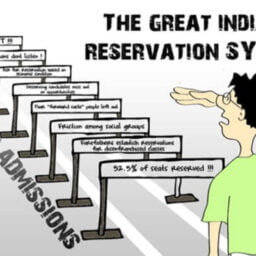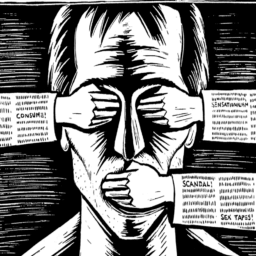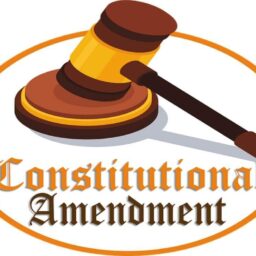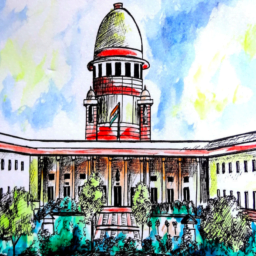INTRODUCTION
Privacy, the state of being solitary or free and not disturbed by any other individual. It is related to the terms called private life or secluded.[1] This term itself concludes broader concepts in it. Example- keeping your things secret, not disclosing your personal information, keeping private your bank details, medical records, private photos, etc. In brief, privacy is keeping intimate things private and secure. We are living in the contemporary world wherein every six months we get more upgraded and advanced in the sense of technology and this changing and running world of automation keeping personal data private all the time from everyone is becoming next to impossible.[2] All of us use different networking apps and sites or have our government identities in which we have shared our personal data or photos. So, the concept of privacy has become quite wider than the dictionary meaning. Now it includes surveillance, data protection, data management, proper use of photos, etc.[3] basically it’s about when, how and where an individual wants to share his information and at what cost. And this contemporary world led us towards the phenomenon called the “right to privacy”.
History of privacy
We have been using the word privacy since the beginning. The day we start distinguishing between the words like ‘inner matter’ or ‘outer matter’, we start giving relevance to the word “privacy” unintentionally.[4] Privacy as a concept or feature of human rights was established in the US in 1890 with a popular article of ‘Warren and Brandeis’ on “The Right to Privacy”.[5] This article played a huge role in establishing the foundation of the right to privacy as a law in the US and also left a huge influence on the Indian judiciary for future review. The outlook of privacy evolved in England quite late, maybe around 1991.[6] In the initial days, they didn’t have strong laws to protect the privacy of individuals. This was also one of the reasons why India never directly recognized privacy as a fundamental right in its initial time because we largely followed the common law system.
The initial position of the right to privacy in India, previously we didn’t have the right to privacy as a fundamental right, our Constitution directly never adopted the concept of the right to privacy but provided remedies from time to time to the people who were seeking relief at infringement of personal space and private details.[7] We have an excess number of cases, who raised the question of the breach of privacy. One of them is Kharak Singh v. State of Uttar Pradesh[8] the bench of six judges of SC rejected the idea of providing privacy with the status of fundamental right but accepted it as essential and provided relief to the plaintiff. We have many other examples in history which work as evidence for the indirect acceptance of the right to privacy by legislation and the judiciary. Information Technology Act, 2000[9] aka IT Act.
This act has also governed data protection measures which proves the importance of an individual’s data. PUCL (People’s Union of Civil Liberties) v. Union of India, 1997[10] the issue was, a petition filed arguing Section 5(2) of Indian Telegraph Act, 1885[11] should be held unconstitutional because it provides unlimited power to the state to surveillance and tape anyone’s phone. Court didn’t declare it (Section 5(2) of the Indian Telegraph Act)[12] unconstitutional but released the guidelines against the state regarding telephone tapping in India.
Conclusion
The SC of India finally gave the fundamental right status to the “Right to Privacy” in Puttaswamy v. Union of India,[13] judgement. Privacy had to travel the long route to reach its destination. The right to privacy was given a status of fundamental right under Article 21, “Right to Life”. The nine-judge bench unanimously held that the right to privacy as a fundamental right is part of the right to live a life with dignity and liberty. And I believe the SC decision is an affirmative step in this information technology era where a single click can secure our private information and allow a third party to have its access at the same time. We also have article 12 of the Universal Declaration of Human Rights, 1948[14] which talks about the person’s privacy and says ‘law confers on every person the right to be protected from any such disturbance to affect his personal space or intimate matters’.
As long as we have a life we will have privacy. It is linked with the most private outlook of human life. So, it is a non-integrated part of humans. And above mention situations detects that the “right to privacy” holds important space in the Indian judiciary and constitution in the present time frame. And the US’s interpretation of the ‘right to privacy’ helped us in many ways in establishing privacy as a fundamental right. Now we have an authorised article (Article 21) that provides protection to an individual’s family, marriage, sexual identity, private photos and any other thing which consider a necessity for living a dignity full life.
Author(s) Name: Agrima Singh (Lloyd Law College, Greater Noida)
References:
[1] Oxford dictionary, DK Illustrated, definition of privacy, Page No.535.
[2] Madhavi Goradia Divan, Facts of Media Law, EBC (Eastern Book Company) second edition, Page No. 166, 2013.
[3] Michael Friedewald, Rachel L. Finn, David Wright, Seven types of privacy, (September 29, 20201, 07:45 pm), https://www.researchgate.net/publication/258892458_Seven_Types_of_Privacy.
[4] Peter Blume, Data protection and privacy, (September 30, 2021, 06:22 pm), https://www.scandinavianlaw.se/pdf/56-7.pdf.
[5] Madhavi Goradia Divan, Facts of Media Law, EBC (Eastern Book Company) second edition, Page No.179, 2013.
[6] Madhavi Goradia Divan, Facts of Media Law, EBC (Eastern Book Company) second edition, page no. 171, 2013.
[7] Krishnadas Rajagopal, The laydown on the right to privacy, (September 29, 2021, 10:30 pm) https://www.thehindu.com/news/national/the-lowdown-on-the-right-to-privacy/article19386366.ece.
[8] Kharak Singh v. State of U.P., AIR 1963 SC 1295.
[9] Information Technology Act, 2000, Ministry of Law and justice, https://legislative.gov.in/sites/default/files/A2000-21_0.pdf, (2000).
[10] PUCL v. Union of India, (1997) 1 SCC 301.
[11] Indian Telegraph Act, 1855, Section 5(2) Ministry of Law and Justice, https://legislative.gov.in/sites/default/files/A1885-13.pdf, (1855)
[12] Indian Telegraph Act, 1855, Section 5(2), Ministry of Law and Justice, https://legislative.gov.in/sites/default/files/A1885-13.pdf, (1855).
[13] K.S Puttaswamy v. Union of India, (2017) 10 SCC 1.
[14] United Nations Organisation, Universal Development of Human Rights, Article 12 (Oct 1, 2021, 06:55pm) https://www.un.org/en/udhrbook/pdf/udhr_booklet_en_web.pdf.















